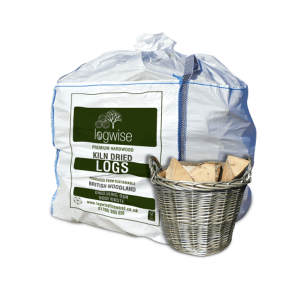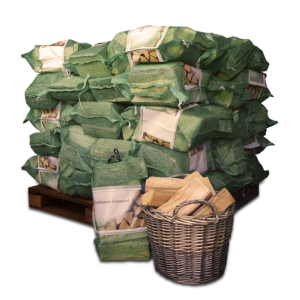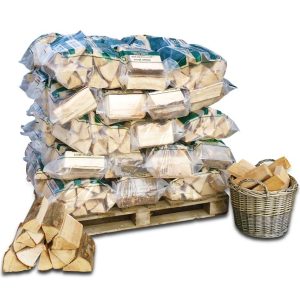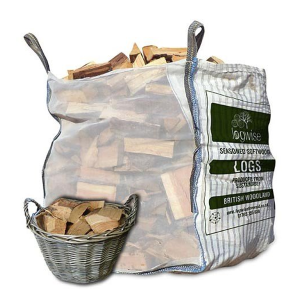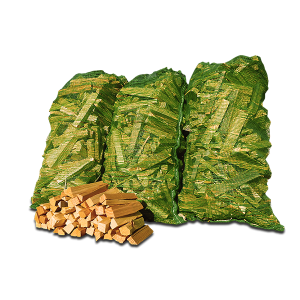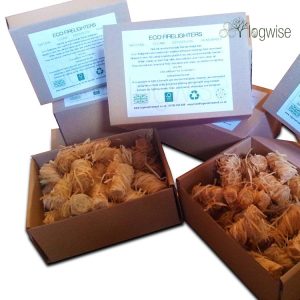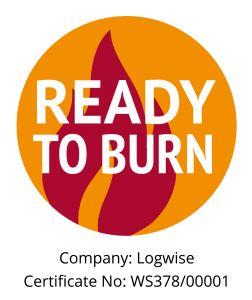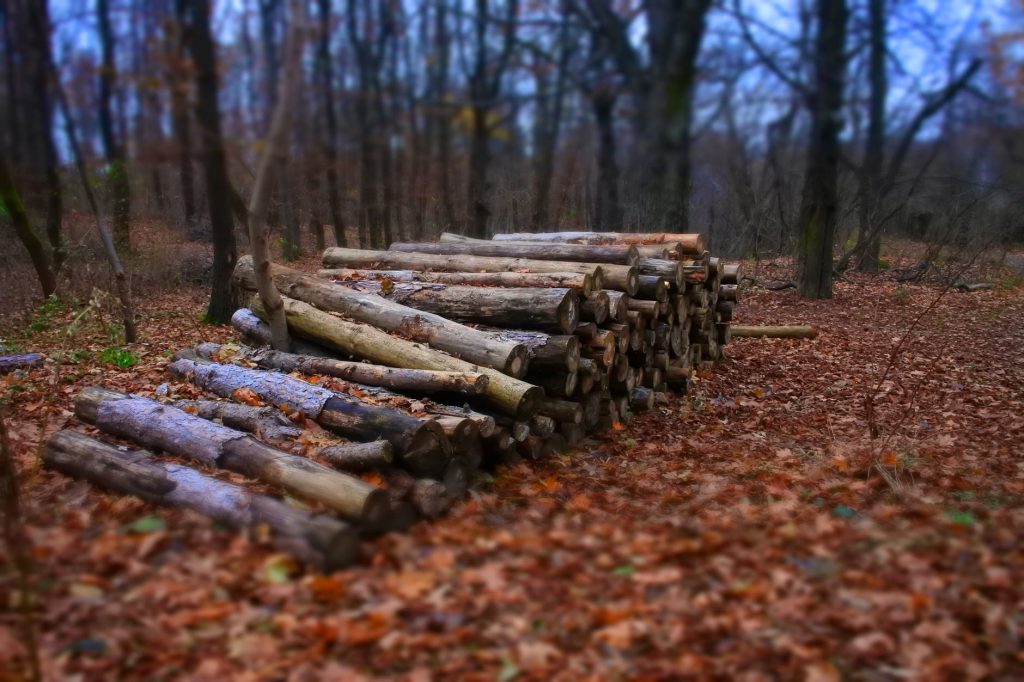
Is it OK to burn wet firewood?
Damp firewood doesn’t sound great for building a nice, roaring fire. But if your firewood got wet in rain or from standing on moist ground, fear not. Things can be salvaged.
In this blog post, we’ll guide you through what to do if you’ve got wet firewood. Here’s what we’ll cover:
- Why not to burn wet firewood
- How to dry wet firewood
- How to store wood so it doesn’t get wet
Why you shouldn’t burn wet firewood
Chucking your wet logs onto the fire might seem like a good way to dry them out. After all, fire heats up water and causes it to evaporate off as steam.
In a pinch, you can do this. For example, if you’re out camping and a few of your logs have gotten wet, you can position them around the outside of a burning campfire. The heat will force some of the moisture to evaporate out, hopefully making them dry enough to burn in an hour or so.
In most situations though, we really recommend drying your logs properly before burning them.
Wet firewood is much more prone to crackle and pop as well – neither of which are particularly problematic, but they definitely disrupt the relaxing ambience of a campfire or fireplace.
Burning wet firewood is also the start of a dangerous process –
- Wet firewood generates more smoke.
- More smoke means more residue build-up in your flue or chimney.
- More residue means a higher risk of chimney fires.
- It also increases the risk of damage to your chimney or flue.
These factors are why we make sure to keep the moisture content in our firewood super low. It’s also why the government are banning the sale of wood with a moisture content over 20% in February 2021.
How to dry wet firewood
Thankfully, you don’t need to throw out your wet logs. Drying wet firewood is possible and, depending on how much time you have, there are a few ways to do it.
Drying firewood: Not much time
If your firewood is wet and you’ve got plans to burn it in the next few days, leaving it to season for a few months isn’t an option. In this case, you can try drying it in your oven.
Be careful if you use this method, and follow the steps carefully. Wood in a hot oven is, obviously, a fire risk. So take all relevant precautions and supervise the wood throughout the process.
- Turn your oven on to 100°c.
- Turn on the fan to allow air to circulate.
- Let the oven get up to temperature.
- Place your logs on oven racks, ensuring that no pieces are touching.
- Place a tray of water at the bottom of the oven to allow moisture levels to equalise.
- Check the wood every ten minutes, being careful while handling it: It will be hot!
- Return to the heat until you’re satisfied with the moisture levels.
- Leave hot wood to cool, and keep an eye on it: It’s still a fire risk.
Drying firewood: Plenty of time
If you’ve got the luxury of time, seasoning your wet firewood outside in the elements is your best option. For this method, you just need to store your wood in a way that’s conducive to drying and let Mother Nature take care of the rest.
How to store your firewood to dry it out and keep it dry
These pointers come from another blog post we’ve written about how to store your firewood. If you want to learn more, we recommend reading that post!
- Keep the wood off of the ground if the surface is moist.
- Keep the top of the wood covered with something waterproof.
- Make sure air can circulate through the woodpile: Wind is a powerful drying force.
- Try to ensure the wood spends some time in direct sunlight: Again, this is a natural drying mechanism.
This method is great because it also discourages bugs and other creepy crawlies from taking up residence in your woodpile!
Wet firewood FAQs
You may have some other questions about dealing with wet wood. We’ve tried to answer as many as possible in this section – any others, drop us an email and we’ll try to help.
How can firewood get wet?
You can buy firewood with high moisture content, sometimes without realising until you get it home. Wood left outdoors that’s not stored properly is also prone to get wet from rain, condensation, and wet ground.
Even wood that’s stored properly can get wet during particularly wet weather, or during flooding. Wood stored indoors can be leaked on, sit on spills for a long time without being noticed. The list of ways wood can get wet is fairly endless, unfortunately!
How do I tell if my firewood is wet inside?
Sometimes logs can be dry on the outside but still damp in the middle. You can feel the ends to see whether the centre rings look or feel moist, but this isn’t a reliable way to tell what’s going on inside the log.
If you have one (or can borrow one from someone who does), moisture detectors are the best way. Simply stick the two pins into your log, and it’ll give you a moisture reading.
How long does wet firewood take to dry?
It can take months for firewood to dry completely. In fact, we leave our seasoned firewood drying in our log yard for 12 months.
This is why you really need to be on top of your firewood storage!
Will firewood burn if wet?
It will, although for the reasons we outlined at the beginning, it’s not advisable to do so. Lighting a fire with wet wood is a lot harder than it needs to be as well. Overall, we recommend avoiding this situation entirely.

